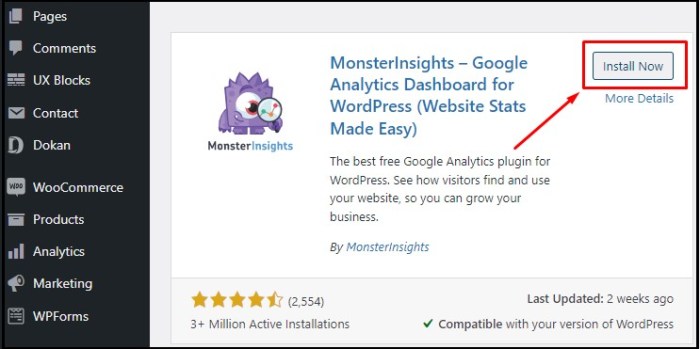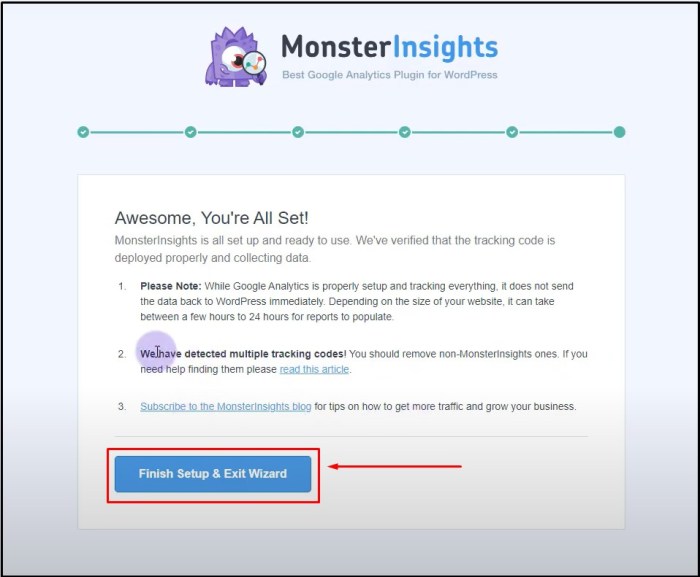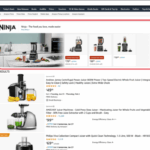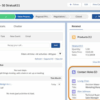How to setup WooCommerce conversion tracking is crucial for any e-commerce business looking to maximize sales and understand customer behavior. This guide dives deep into the process, from connecting your store to Google Analytics to implementing conversion tracking tags and analyzing the data to drive improvements. We’ll cover everything from basic setups to advanced techniques, ensuring you get the most out of your WooCommerce store’s performance.
Learn how to track crucial metrics like purchases, add-to-carts, and abandoned carts. We’ll walk you through the steps involved in setting up and optimizing your WooCommerce conversion tracking, equipping you with the knowledge to understand and enhance your store’s performance. We’ll also address common mistakes to avoid and offer advanced techniques for a more comprehensive view of your data.
Introduction to WooCommerce Conversion Tracking
WooCommerce, a popular e-commerce platform, allows businesses to track customer interactions and understand their online behavior. Conversion tracking goes beyond basic website analytics, diving deeper into the specific actions that lead to sales and revenue generation. This detailed analysis empowers businesses to optimize their online strategies, boosting profitability and customer satisfaction. It’s not just about counting visitors; it’s about understanding which actions drive customers towards completing a purchase.Conversion tracking provides invaluable insights into the effectiveness of marketing campaigns, product listings, and overall website design.
By identifying what works and what doesn’t, businesses can refine their approach, ensuring that every aspect of the online journey contributes to achieving their sales goals. This crucial data analysis is fundamental for informed decision-making in the competitive world of online retail.
Understanding WooCommerce Conversion Tracking
Conversion tracking in e-commerce involves meticulously monitoring specific actions taken by users on your website. These actions, which ultimately lead to a desired outcome (a sale, a signup, a lead), are precisely what conversion tracking measures. This detailed monitoring allows you to understand user behavior, pinpoint areas for improvement, and optimize your marketing efforts. It’s a crucial element in evaluating the performance of your online store and refining strategies to maximize revenue.
Importance of Conversion Tracking for WooCommerce Stores
Conversion tracking is essential for WooCommerce stores to understand what works and what doesn’t. By monitoring key actions, like adding items to carts or completing purchases, store owners gain valuable insights into customer behavior. This data is critical for refining marketing strategies, improving product listings, and enhancing the overall customer experience. Understanding the customer journey allows for targeted interventions to maximize conversions and sales.
Ultimately, this translates to a more profitable and sustainable business model.
Benefits of Using Conversion Tracking for Business Growth
Conversion tracking provides significant advantages for business growth. Improved understanding of customer behavior allows for more effective marketing campaigns, targeted advertising, and a refined customer journey. By pinpointing which marketing efforts yield the best results, you can allocate resources more effectively, leading to a higher return on investment. Optimized website design and product listings based on customer insights further enhance conversion rates, ultimately leading to increased sales and revenue.
Common WooCommerce Conversion Metrics
Understanding the metrics that matter is paramount. Key metrics encompass more than just sales figures. Conversion rates, bounce rates, average order value, and customer lifetime value (CLTV) are crucial for evaluating the overall health and performance of your WooCommerce store. Analyzing these metrics allows for a holistic view of customer engagement and profitability.
Key WooCommerce Conversion Goals
Defining specific goals is crucial for effective tracking. These goals should be measurable, achievable, relevant, and time-bound (SMART). The table below Artikels key WooCommerce conversion goals, highlighting their importance and how they contribute to overall business objectives.
| Conversion Goal | Description | Importance |
|---|---|---|
| Purchase Completion | Tracking the number of successful purchases. | Directly impacts revenue and profitability. |
| Add to Cart | Monitoring the number of items added to the shopping cart. | Indicates user interest and potential purchase intent. |
| View Product Page | Tracking the number of product pages viewed. | Provides insight into product interest and engagement. |
| Registration | Tracking the number of customer registrations. | Indicates potential for future purchases and customer loyalty. |
| Contact Form Submission | Tracking inquiries and customer support interactions. | Provides valuable feedback and potential lead generation. |
Setting up Google Analytics for WooCommerce
WooCommerce, a popular e-commerce platform, integrates seamlessly with Google Analytics, allowing you to track crucial data about your store’s performance. This detailed guide will walk you through the process of connecting your WooCommerce store to Google Analytics, setting up custom dimensions and metrics, and understanding different tracking methods. By understanding this process, you can gain valuable insights into customer behavior, product performance, and overall store effectiveness.Understanding the power of Google Analytics for WooCommerce allows you to make data-driven decisions, optimize your store’s design and functionality, and improve conversion rates.
Tracking website traffic, user engagement, and conversion events through Google Analytics provides a comprehensive view of your store’s performance. This allows you to identify areas for improvement and refine your marketing strategies to better serve your customers.
Connecting Your WooCommerce Store to Google Analytics
To connect your WooCommerce store to Google Analytics, you’ll first need a Google Analytics account. If you don’t have one, create one at analytics.google.com. Once you have your account, you’ll need to obtain your tracking ID. This unique identifier is essential for Google Analytics to track data from your website. Once you have your tracking ID, you can implement it on your WooCommerce store.
Configuring Google Analytics Tracking
The process of configuring Google Analytics tracking involves several steps. First, you need to add the Google Analytics tracking code to your website. This code, provided by Google Analytics, is placed in the `
` section of your website’s HTML. This code monitors user interactions on your site. Then, you can start tracking your store’s performance by configuring the desired reports. This process enables the tracking of important metrics such as website traffic, bounce rates, and conversion rates.Setting up Custom Dimensions and Metrics for WooCommerce
Custom dimensions and metrics allow you to gather specific data about your WooCommerce store. They help you create more detailed reports, tailored to your specific needs. For example, you might want to track the specific product category a user viewed or the source of their referral. This information can be used to optimize your marketing campaigns and improve your store’s design.
Defining custom dimensions and metrics enables the creation of more detailed and actionable reports. For instance, tracking the specific product category viewed by a customer allows for targeted marketing efforts toward those products.
Comparing Google Analytics Tracking Methods
Different methods offer varying levels of data granularity and integration with WooCommerce. A table comparing these methods is shown below.
| Tracking Method | Description | Pros | Cons |
|---|---|---|---|
| Universal Analytics | The older method, still functional but less detailed. | Simple setup, widely supported. | Less granular data, not as flexible. |
| Google Analytics 4 (GA4) | The latest method, providing a comprehensive view of your store. | More comprehensive data, better flexibility, stronger focus on user journeys. | Steeper learning curve, might require adjustments to existing setup. |
Installing the Google Analytics Plugin for WooCommerce
Installing the Google Analytics plugin for WooCommerce is a straightforward process. Most popular plugins will guide you through the setup. After installing the plugin, you’ll need to connect your Google Analytics account. Follow the plugin’s instructions to complete the setup and track your WooCommerce store effectively. This involves configuring the plugin to integrate with your Google Analytics account, and ensuring accurate data collection.
Implementing Conversion Tracking Tags
Adding conversion tracking tags to your WooCommerce store is crucial for understanding customer behavior and optimizing your marketing efforts. This process allows you to precisely measure the effectiveness of your campaigns and pinpoint areas for improvement. Accurate tracking empowers data-driven decisions, enabling you to fine-tune your strategies and maximize returns.Implementing these tags ensures that Google Analytics accurately captures important user actions on your site, such as purchases, adding items to the cart, and browsing specific product pages.
This detailed insight allows you to evaluate the performance of various marketing channels, assess the effectiveness of your products, and ultimately enhance your sales funnel.
Methods for Implementing Conversion Tracking Tags
There are several ways to implement conversion tracking tags in your WooCommerce store. Choosing the appropriate method depends on your technical expertise and the complexity of your store’s setup. The most common methods include using plugins, adding code directly to your theme files, and utilizing a dedicated tracking platform. Each method has its advantages and disadvantages, and understanding these nuances is key to selecting the optimal approach.
Setting Up Conversion Events
Conversion events are crucial for tracking specific actions within your WooCommerce store. Each event represents a significant step in the customer journey, from initial browsing to final purchase. Properly configured events allow you to monitor key metrics like conversion rates and customer engagement, enabling you to identify trends and optimize your sales process.
Tracking Specific Actions
This section details the process of tracking different actions within your WooCommerce store.
- Purchases: Tracking purchases is fundamental for measuring sales performance. This involves using a conversion tag specifically designed for purchases, which triggers when a customer completes a transaction. This allows you to accurately gauge the effectiveness of your marketing strategies and pinpoint areas needing improvement.
- Add-to-Cart: Tracking add-to-cart events provides valuable insight into user engagement and purchase intent. This allows you to understand what products are most appealing and identify potential bottlenecks in the purchasing process. This data helps you refine your product presentations and website design to better guide customers towards checkout.
- Page Views: Tracking page views, particularly for specific product pages, provides a comprehensive understanding of customer browsing behavior. This enables you to analyze which products generate the most interest and pinpoint areas where customers might be dropping off in the purchasing funnel. This insight informs product placement and marketing strategies.
Conversion Event Tag Table, How to setup woocommerce conversion tracking
The table below Artikels different conversion events and their corresponding tags within Google Analytics.
| Conversion Event | Tag Name | Description |
|---|---|---|
| Purchase | `ecommerce_purchase` | Tracks completed purchases, including product details. |
| Add to Cart | `ecommerce_add_to_cart` | Tracks when a product is added to the shopping cart. |
| View Product | `page_view` | Tracks when a product page is viewed. (Requires further configuration for detailed tracking). |
| Checkout Start | `checkout_start` | Tracks when a customer begins the checkout process. |
Tracking Key WooCommerce Conversions
WooCommerce, a popular e-commerce platform, allows businesses to track various customer interactions. By implementing robust conversion tracking, you gain valuable insights into customer behavior, identify areas for improvement, and optimize your marketing efforts. This section will detail how to track crucial WooCommerce conversions, enabling you to understand which aspects of your site are driving sales and other key actions.Effective conversion tracking involves identifying the most critical events within your WooCommerce store.
This includes tracking not only purchases but also preliminary steps like adding items to carts, exploring product pages, and even abandoning carts. Understanding these actions provides a comprehensive view of the customer journey, allowing you to pinpoint areas where users might be dropping off and intervene with targeted strategies.
Tracking Purchases
Proper purchase tracking is fundamental for understanding sales performance. Integrating conversion tracking tags with your WooCommerce setup allows you to measure the number of successful purchases, their value, and associated revenue. This detailed data provides a clear picture of your sales performance and helps you optimize your sales funnels. For instance, if you notice a low conversion rate on a specific product category, you can adjust your marketing strategy or product presentation to improve performance.
Tracking Add-to-Cart Events
Monitoring add-to-cart events provides valuable insights into customer engagement. By tracking these events, you can gauge interest in products and identify potential bottlenecks in the purchasing process. If a high percentage of users add items to their cart but don’t complete the purchase, you can investigate potential reasons, such as complicated checkout procedures or high shipping costs.
Setting up WooCommerce conversion tracking is crucial for understanding customer journeys and optimizing sales. Knowing how to properly track conversions allows you to refine your marketing strategies. Boosting your online presence is key, and getting more social media followers can greatly impact your business visibility, which in turn can help you increase your conversion rates. You can learn effective strategies for get social media followers from our comprehensive guide, which will help you connect with more potential customers and drive higher sales.
Ultimately, mastering WooCommerce conversion tracking is vital for success.
Tracking Abandoned Cart Events
Abandoned carts represent a significant loss of potential revenue. Implementing abandoned cart recovery strategies, triggered by conversion tracking, allows you to re-engage customers and encourage them to complete their purchases. Email marketing campaigns reminding customers of their abandoned items are a common and effective strategy. You can also offer discounts or promotions to incentivize completion.
Tracking Successful Registrations or Sign-ups
Tracking successful registrations or sign-ups is crucial for building your customer database. These data points inform your marketing strategies and help you understand customer acquisition effectiveness. By analyzing the data, you can determine which marketing channels are most successful in driving new registrations and adjust your strategy accordingly.
Tracking the Checkout Process
Tracking the checkout process allows you to pinpoint areas where customers are dropping off. Analyzing this data helps you identify friction points and optimize the checkout experience for a higher conversion rate. This could involve streamlining the checkout form, improving security concerns, or making the payment options more user-friendly.
Tracking Product Views and Clicks
Tracking product views and clicks allows you to assess product popularity and customer engagement. This data helps you understand which products are attracting the most interest and which ones might need improvement. A detailed analysis of product views and clicks will give you a clear picture of what products customers are engaging with, aiding in targeted marketing efforts and product optimization.
Optimizing Conversion Tracking for Enhanced Insights: How To Setup Woocommerce Conversion Tracking
WooCommerce conversion tracking is only as good as your ability to analyze and optimize the data it generates. This crucial step involves refining your tracking setup to provide actionable insights, not just a flood of numbers. By segmenting your data, identifying potential issues, and regularly reviewing your setup, you can unlock a deeper understanding of your customer journey and optimize your sales funnels.Effective conversion tracking isn’t a one-time setup.
It’s an ongoing process of refinement and adjustment. This section will guide you through strategies for maximizing the value of your WooCommerce conversion tracking data, ensuring it truly informs your business decisions.
Segmenting Your Data for Deeper Insights
Understanding your customer base is key to optimizing your conversion rates. Segmenting your data allows you to isolate specific customer groups and analyze their behavior. This granular view reveals patterns and trends you might miss with a broad overview. For instance, you can analyze conversions based on demographics, geographic location, or even the specific products purchased.
- Demographic Segmentation: Identify which age groups, genders, or locations are converting most effectively. This helps you tailor your marketing efforts and product offerings to resonate with your most valuable customer segments.
- Behavioral Segmentation: Analyze the actions of customers who convert versus those who don’t. Look for common patterns in browsing behavior, product views, and cart abandonment to identify pain points and optimize your website accordingly.
- Acquisition Channel Segmentation: Pinpoint which marketing channels drive the highest conversion rates. This crucial information allows you to allocate your marketing budget effectively and prioritize channels that yield the best return on investment.
Advanced Conversion Tracking Setups
Going beyond basic conversions, you can track more nuanced events. These advanced setups provide a richer understanding of the customer journey and can be invaluable for optimizing your site’s performance.
- Product-Specific Tracking: Track conversions for individual products or product categories. This allows you to see which products perform best, identify underperforming items, and understand which product combinations result in higher conversions.
- Lead Generation Tracking: Monitor conversions beyond purchases. This could include form submissions, newsletter sign-ups, or contact requests. These valuable leads can be analyzed to understand their engagement and potential conversion to paying customers.
- Checkout Flow Analysis: Track each step in the checkout process to identify potential drop-offs. This provides critical information on where customers are abandoning their carts and helps pinpoint areas for improvement.
Identifying and Fixing Conversion Tracking Issues
Accuracy is paramount in conversion tracking. Issues can arise from misconfigured tags, incorrect data entry, or even technical problems on your website. Regularly reviewing and testing your tracking setup is crucial to catch and correct any problems before they impact your data analysis.
Setting up WooCommerce conversion tracking is crucial for understanding your online store’s performance. However, with the inevitable decline in Google search traffic, as discussed in this insightful piece on google search traffic decline inevitable , it’s more important than ever to diversify your marketing strategies. This means focusing on other channels, like social media advertising, and ensuring your WooCommerce setup accurately reflects your conversions.
You’ll need to configure your tracking meticulously to measure success across all avenues.
- Validate Tag Implementation: Use debugging tools and resources to ensure the conversion tracking tags are correctly implemented on all relevant pages.
- Review Data Consistency: Regularly cross-check data with other sources like your WooCommerce dashboard to ensure accuracy.
- Identify and Correct Errors: If you detect discrepancies, identify the cause and fix the issue immediately. This might involve reviewing code, updating plugins, or checking for server errors.
Regular Review and Adjustment of Your Tracking Setup
The digital landscape is constantly evolving. Your conversion tracking setup needs to adapt to changes in your website, your marketing campaigns, and customer behavior. Regularly reviewing and adjusting your tracking setup ensures that your data remains relevant and actionable.
Using Conversion Tracking Data for Improvement

Conversion tracking data isn’t just a collection of numbers; it’s a roadmap to optimizing your WooCommerce store. By analyzing this data, you can pinpoint areas where your customers are struggling and identify strategies to improve their experience, ultimately driving more sales. This deep dive into your conversion tracking data allows you to refine your marketing approach, make data-driven decisions, and ultimately boost your bottom line.Understanding your customer journey is crucial for success.
Conversion tracking data provides valuable insights into how customers interact with your website, from initial landing page visits to final purchase confirmation. This information allows you to identify pain points and friction points within the process.
Setting up WooCommerce conversion tracking is crucial for understanding customer behavior and optimizing your online store. A strong online presence is key to success, and understanding how to effectively brand your business is equally important, as detailed in our guide to online branding. By implementing the correct tracking, you can then use that data to refine your strategy, ensuring you’re reaching the right customers with the right message, ultimately boosting your WooCommerce sales.
Analyzing Conversion Tracking Data
Analyzing conversion tracking data is a multi-faceted process that goes beyond simply looking at numbers. It requires a structured approach to identify trends, patterns, and correlations. This involves meticulously reviewing data to determine the sources of your conversions and to identify factors influencing those conversions. Tools like Google Analytics offer comprehensive dashboards to visualize conversion rates and funnel performance, allowing for an easy identification of areas needing attention.
Identifying Areas for Improvement
A critical step is to pinpoint specific areas where your WooCommerce store can improve the customer journey. Analyze bounce rates, time on page, and drop-off points within your sales funnel. For example, a high bounce rate on your product pages might indicate that the product descriptions aren’t compelling enough or that the page loading speed is slow. Identifying such patterns empowers you to address specific pain points within the customer journey, thus improving conversions.
Strategies for Enhancing the Customer Journey
Enhancements to the customer journey stem directly from the analysis of conversion tracking data. Identifying drop-off points allows you to introduce targeted solutions. If users are abandoning their carts, consider implementing a streamlined checkout process or offering a variety of payment options. If users are struggling to find products, improve website navigation and search functionality.
Using Conversion Data to Refine Marketing Strategies
Conversion tracking data provides crucial insights into the effectiveness of your marketing campaigns. By analyzing which channels are driving the most conversions, you can optimize your marketing budget and allocate resources more effectively. For instance, if social media ads are generating a high conversion rate, you might increase your budget in that area. Conversely, if a particular email campaign is underperforming, you can adjust the content or strategy.
The Significance of A/B Testing and its Relationship to Conversion Tracking
A/B testing is a powerful tool for refining your website and marketing strategies. Conversion tracking provides the data to measure the impact of different variations. By comparing conversion rates between different versions of a page or campaign, you can determine which performs best. For example, testing different headlines or calls to action on a product page can reveal which resonates more with your target audience, resulting in a higher conversion rate.
This iterative process, driven by data, allows you to continuously optimize your WooCommerce store for maximum performance.
Common Conversion Tracking Mistakes to Avoid
Setting up WooCommerce conversion tracking is crucial for understanding customer behavior and optimizing your online store. However, common mistakes can significantly skew your data and hinder your efforts. This section highlights typical errors and provides actionable solutions to ensure accurate and insightful tracking.Accurately tracking conversions is essential for measuring the effectiveness of your marketing campaigns and website improvements. Errors in setup can lead to misleading insights, impacting your decision-making processes and potentially costing you valuable sales.
Incorrect Tag Implementation
Implementing the conversion tracking tags incorrectly is a frequent mistake. This often involves errors in syntax, placement, or missing elements within the code. Such errors can prevent the tags from firing correctly, leading to incomplete or inaccurate data. This ultimately results in a flawed understanding of your conversion funnel and marketing ROI.
- Missing or Incorrect Tags: Ensure all necessary conversion tracking tags are correctly implemented. This includes tags for specific events, such as adding items to the cart, completing a purchase, or registering for a newsletter. Incorrect or missing tags will lead to incomplete or inaccurate data.
- Incorrect Tag Placement: Tags must be placed strategically within the webpage’s code. Incorrect placement can prevent them from firing properly, causing the tracking system to miss crucial data points. This is particularly important for events triggered by user interactions.
- Incorrect Tag Attributes: Verify that all tag attributes are correctly set, especially those that define the conversion event. Incorrect attributes can lead to inaccurate tracking of the conversion, and inaccurate reporting.
Ignoring UTM Parameters
UTM parameters are essential for understanding the source of traffic driving conversions. Ignoring them can obscure the effectiveness of your marketing campaigns and the channels responsible for driving valuable traffic.
- Lack of UTM Parameters: Without properly configured UTM parameters, it’s difficult to attribute conversions to specific marketing campaigns or sources (e.g., social media ads, email marketing). This makes it hard to assess which campaigns are performing well and which need improvement.
- Incorrect UTM Parameter Values: Errors in UTM parameter values can lead to incorrect attribution of conversions. Incorrect values might incorrectly assign conversions to the wrong source, campaign, or medium.
Incorrect Event Tracking
Accurate event tracking is vital for understanding user behavior. Errors here lead to misleading insights.
- Missing or Incorrect Event Tracking for Specific Actions: Ensuring the tracking of key actions, such as adding items to the cart, viewing product pages, or initiating checkout processes, is critical. Without proper event tracking for these actions, you lose valuable insights into user engagement.
- Missing or Incorrect Event Naming: Each event needs a unique name. Errors here can lead to mixed or ambiguous data. Using clear, consistent event names is essential for accurate data interpretation.
Table of Common Mistakes and Solutions
| Mistake | Solution |
|---|---|
| Incorrect tag implementation (missing, incorrect placement, or attributes) | Double-check tag implementation against documentation, ensure correct placement within the website’s code, and verify attribute values. |
| Ignoring UTM parameters | Use UTM parameters for every marketing campaign or source to correctly track traffic origins and attribute conversions. |
| Incorrect event tracking (missing or incorrect event naming) | Implement event tracking for critical user actions, using clear and consistent naming conventions. |
Advanced WooCommerce Conversion Tracking Techniques
WooCommerce conversion tracking, while fundamental, can be significantly enhanced with advanced techniques. Moving beyond basic event tracking, these strategies provide deeper insights into customer behavior, allowing for more targeted optimizations and ultimately, improved conversion rates. This section dives into advanced approaches for comprehensive tracking, covering various aspects like device and browser specifics, custom events, and integrations with other marketing platforms.Advanced conversion tracking isn’t just about more data; it’s about extracting actionable intelligence from that data.
By understanding how customers interact with your WooCommerce store across different devices and browsers, and precisely pinpointing key actions, you can fine-tune your marketing strategies and product offerings for optimal results.
Tracking Conversions Across Devices and Browsers
Different devices and browsers can significantly impact user experience and conversion rates. Understanding these variations allows for tailored optimization efforts. Analyzing data from mobile, tablet, and desktop devices separately, for instance, can reveal critical insights into how different platforms affect conversion points. Likewise, browser-specific variations in user behavior can provide a granular view into performance discrepancies, allowing for adjustments to your website’s design and functionality.
Utilizing Custom Events for Complex Tracking
Beyond standard WooCommerce events, custom events provide the flexibility to track highly specific user interactions. This allows you to monitor nuanced user journeys, providing a richer understanding of their behavior. Imagine tracking the user’s interaction with a specific pop-up window, or the number of times a particular product detail page is visited before purchase. These custom events are pivotal in understanding complex customer flows and pinpointing areas for improvement.
Setting Up Conversion Tracking for Specific Product Categories
Optimizing for different product categories is crucial for maximizing conversion rates. Different categories may have different customer journeys, requiring distinct tracking strategies. You can segment your tracking based on specific product categories, analyzing conversion rates, bounce rates, and other metrics within each category. This targeted approach allows for customized strategies that cater to the unique needs and preferences of each product segment.
For example, if you sell electronics, you might find that certain product categories, like laptops, require more attention due to a higher bounce rate, or a specific step in the purchase process needs optimization.
Integrating with Other Marketing Platforms
Integrating WooCommerce conversion tracking with other marketing platforms provides a holistic view of the customer journey. By linking your data with platforms like Google Ads or Facebook Ads, you can identify the most effective marketing channels and campaigns driving conversions. For example, correlating data from Google Ads with WooCommerce conversion rates will help pinpoint which ad campaigns are most successful in driving sales.
This integrated approach provides a unified perspective, allowing you to optimize your entire marketing funnel for maximum impact.
Conclusion

In conclusion, mastering WooCommerce conversion tracking is a vital step for any online store aiming for growth and success. By following this comprehensive guide, you’ll gain the insights needed to optimize your store’s performance, from understanding customer behavior to refining your marketing strategies. Remember to regularly review and adjust your tracking setup for optimal results.






